21 September 1778 Monday
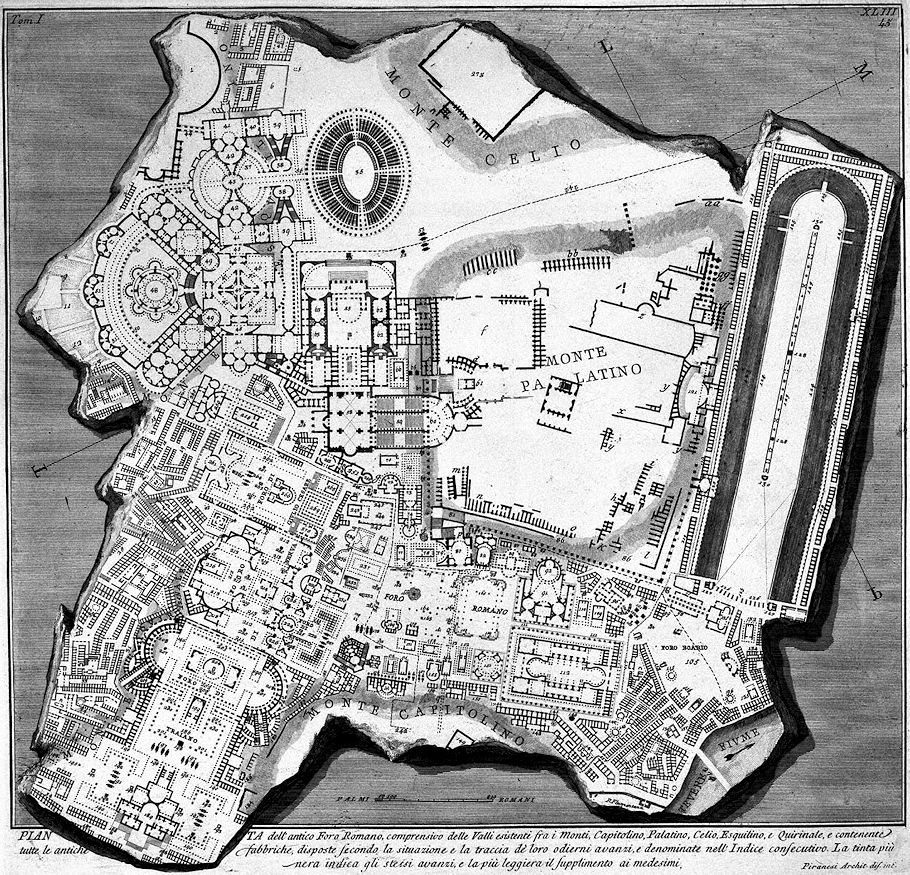
Plan of the Ancient Roman Forum and Circus Maximus, 1778.
Artifacts of the Bianconi vs Piranesi 'Circus of Caracalla' affair 1772-1789
. . . . . .
47 y.o. Francesco Piranesi 1805
Le Antichità della Magna Grecia Parte III
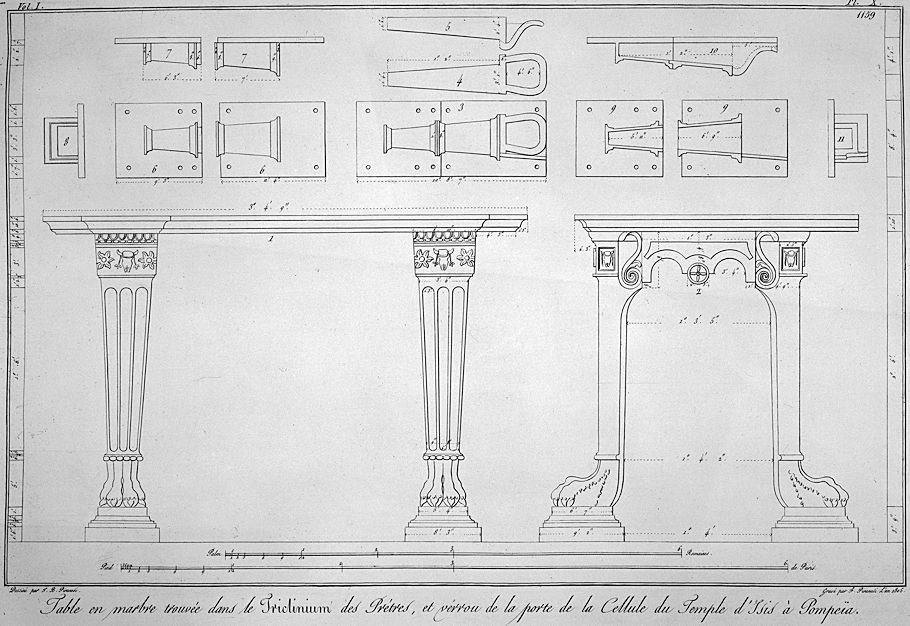
Marble table found in the Triclinium of the Priests, and lock of the door of the Cell of the Temple of Isis in Pompeii.
Drawn by G.B. Piranesi
Engraved by F. Piranesi in the year 1805
21 September 1812 Monday
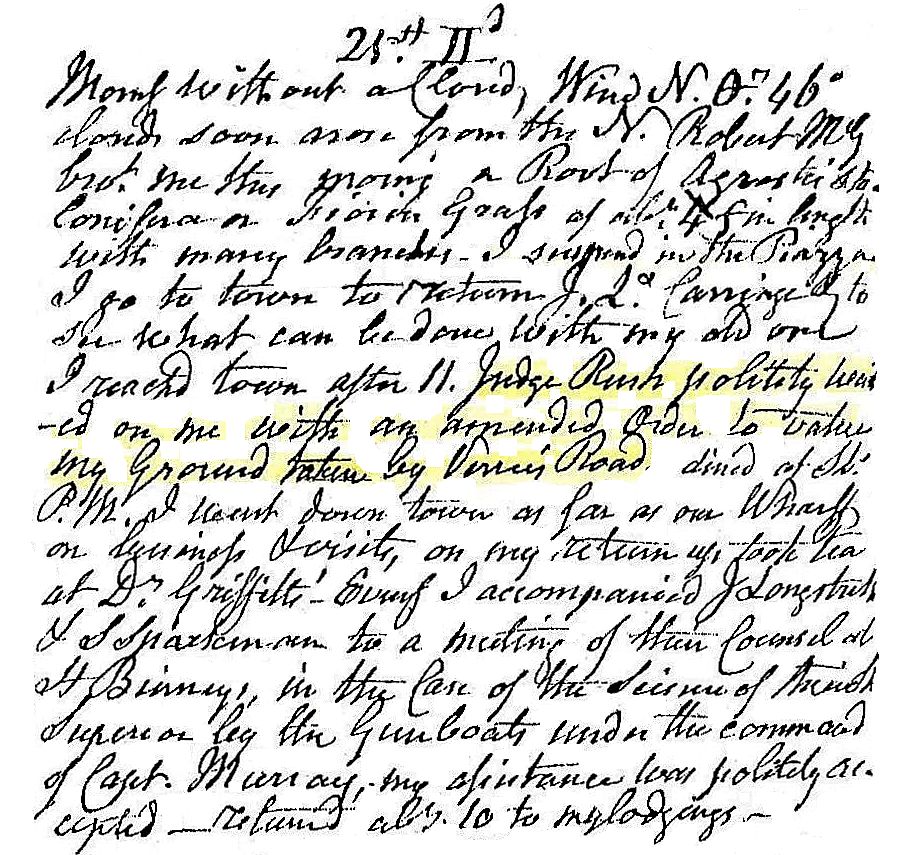
Morning without a cloud, wind N, temperature 46°. Clouds soon arose from the N. Robert McG brought me this morning a root of agrostic[?] .... conifera or F......[?] grass of about 4 inches in length with many branches. I s...... in the piazza. I go to town to return J.L.'s carriage and to see what can be done with my old one. I reached town after 11. Judge Rush politely .....ed on me with an amended order to value my land taken by Verree's road. Dined at SL's. PM I went downtown as far as our wharf on business and visits. On my return up took tea with Dr. Griffith's. Evening I accompanied J. Longstreth and S Sparkman[?] to a meeting of their counsel at St Binney[?] in the case of the seizure[?] of the ... superior leg ltn gunboats under the command od Capt. Murray. My assistance was politely accepted. Returned about 10 to my lodgings.
21 September 1998
buildings of Alexander Severus
"He erected in Rome very many great engineering-works. He respected the priviledges of the Jews and allowed the Christians to exist unmolested."
"He forbade the maintainence in Rome of baths used by both sexes -- which had, indeed, been forbidden previously but had been allowed by Elagabalus. He ordered that the taxes imposed on procurers, harlots, and calamites should not be deposited in the public treasury, but utilized them to meet the state's expenditures for the restoration of the theatre, the Circus, the Amphitheatre, and the Stadium. (note: the Theatre of Marcellus, the Circus Maximus, the Colosseum, struck by lightning under Macrinus, and the stadium build by Domitian in the Campus Martius -- the site of the modern Piazza Navona.)"
"He restored the public works of former emperors and built many new ones himself, among them the bath which was called by his own name (note: the Thermae Alexandrianae were a re-building and extension of the Thermae Neronianae in the Campus Martius immediately N.E. of the Pantheon; the name was still applied to this locality in the eleventh century. These Thermae are depicted on coins of 226) adjacent to what had been the Neronian and also the aqueduct which still has the name Alexandriana (note: It brought the water for his Thermae, conveying it from springs near Gabii about eleven miles E. of the city -- the source of the modern Acqua Felice constructed in 1585. It entered the city at the Porta Maggiore, about 3 km. outside which, near Vigna Certosa, its ruins are still visible, though all traces of it inside the walls have vanished). Next to this bath he planted a grove of trees on the site of some private dwellings which he purchased and then tore down."
"Alexander also began the Basilica Alexandrina (note: Otherwise unknown, but probably connected with his Thermae.), situated between the Campus Martius and the Saepta of Agrippa (note: See note to Hadr., xix. 10.), one hundred feet broad and one thousand long and so constructed that its weight rested wholly on columns; its completion, however, was prevented by his death. The shrines of Isis and Serapis (note: This double sanctuary was in the Campus Martius between the Pantheon and the Saepta, E. of the modern church of S. Maria sopra Minerva. Originally founded in 43 B.C. (Dio, xivii. 15), it was burned under Titus (Dio, lxvi. 24) but rebuilt under Domitian (Eutropius, vii. 23).) he supplied with a suitable equipment, providing them with statues, Delian slaves, and all the apparatus used in mystic rites. Toward his mother Mamaea he showed singular devotion, even to the extent of constructing in the Palace at Rome certain apartments named after her which the ignorant mob of today calls "ad Mammam" (note: Apparently a popular corruption of Mamaea's name.) and also near Baiac a palace and a pool, still listed officially under the name of Mamaea."
"In the Forum of Nerva (which they call the Forum Transitorium) he set up colossal statues of the deified emperors, some on foot and nude, others on horseback, with all their titles and with columns of bronze containing lists of their exploits, doing this after the example of Augustus, who erected in his forum marble statues of the most illustrious men, together with the record of their achievements."
"He built a public store-house in each region of the city, and to this anyone who had no store-house of his own might take his property. He built a bath, too, in every region which happened to have none, and even today many of these are still called Alexander's. And he also constructed magnificent dwellings and presented them to his friends, especially the upright."
"He also wished to build a temple to Christ and give him a place among the gods -- a measure, which, they say, was also considered by Hadrian. For Hadrian ordered a temple without an image to be built in every city, and because these temples, built by him with this intention, so they say, are dedicated to no particular deity, they are called today merely Hadrian's temples. Alexander, however, was prevented from carrying out his purpose, because those who examined the sacred victims ascertained that if he did, all men would become Christians and the other temples would of necessity be abandoned."
"He used often to explain what he had heard from someone, either a Jew or a Christian, and always remembered, and he also had it announced by a herald whenever he was disciplining anyone, "What you do not wish that a man should do to you, do not do to him." And so highly did he value this sentiment that he had it written up in the Palace and in public buildings."
David Magie (translator), The Scriptores Historiae Augustae (Cambridge, MA: Harvard University Press, 1980), vol. II, pp. 219, 223, 225, 229, 233-35, 255, 267, 283.
...the Porticus Alexexandri Severi is in a totally incorrect position at the end of the Equiria, however, Piranesi may be making a suggestive link between Alexander Severus and the military. The small aedicule Isidis on the Equiria across from the Porticus may also be a reference to Alexander's devotion to his mother--Isis is the premiere mother goddess.
...the baths, aqueduct and his grove all comply correctly within the Ichnographia.
...the Domus (Palace of) Alexandri Severi is mentioned in the Historiae text, but is not described, and my theory is that Piranesi placed Alexander's (house) Palace along the Triumphal Way (in the reverse mode) because he favored Christianity and the Golden Rule. The Domus Alexandri Severi is also exactly like the description of Elagabalus' Palace near the Porta Maggiore. Could Piranesi be weaving some complicated message which refers to both the reigns of Elagabalus and Alexander (which did follow each other, and they were cousins), where Alexander successfully undid the corruption of Elagabalus and began to turn Rome toward a more Christian and morally sound city and empire?
...not yet sure, but I think Alexander Severus' name is attached to more buildings within the Ichnographia second only to Nero.
new palace of Elagabalus
from: Amanda Claridge, Rome: An Oxford Archeological Guide (Oxford: Oxford University Press, 1998).
p. 21:
"Bassianus, came to Rome in 219 and, holding the family priesthood of the sun-god Elalgabalus, declared that he and the god were one and the same, building himself a temple on the Palatine and laying out a new palace, later called the 'Sessorian', with its own circus and amphitheater, on older imperial property in the south-east sector of the city (S. Croce in Gerusalemme)."
This description fits perfectly Piranesi's design of the Domus Alexandri Severi. Piranesi's reason for doing this is unclear however... ...can only speculate there is some kind of inversion message involved.
21 September 2001
 
The mural was finished early afternoon 2001.09.12.
21 September 2022 Wednesday
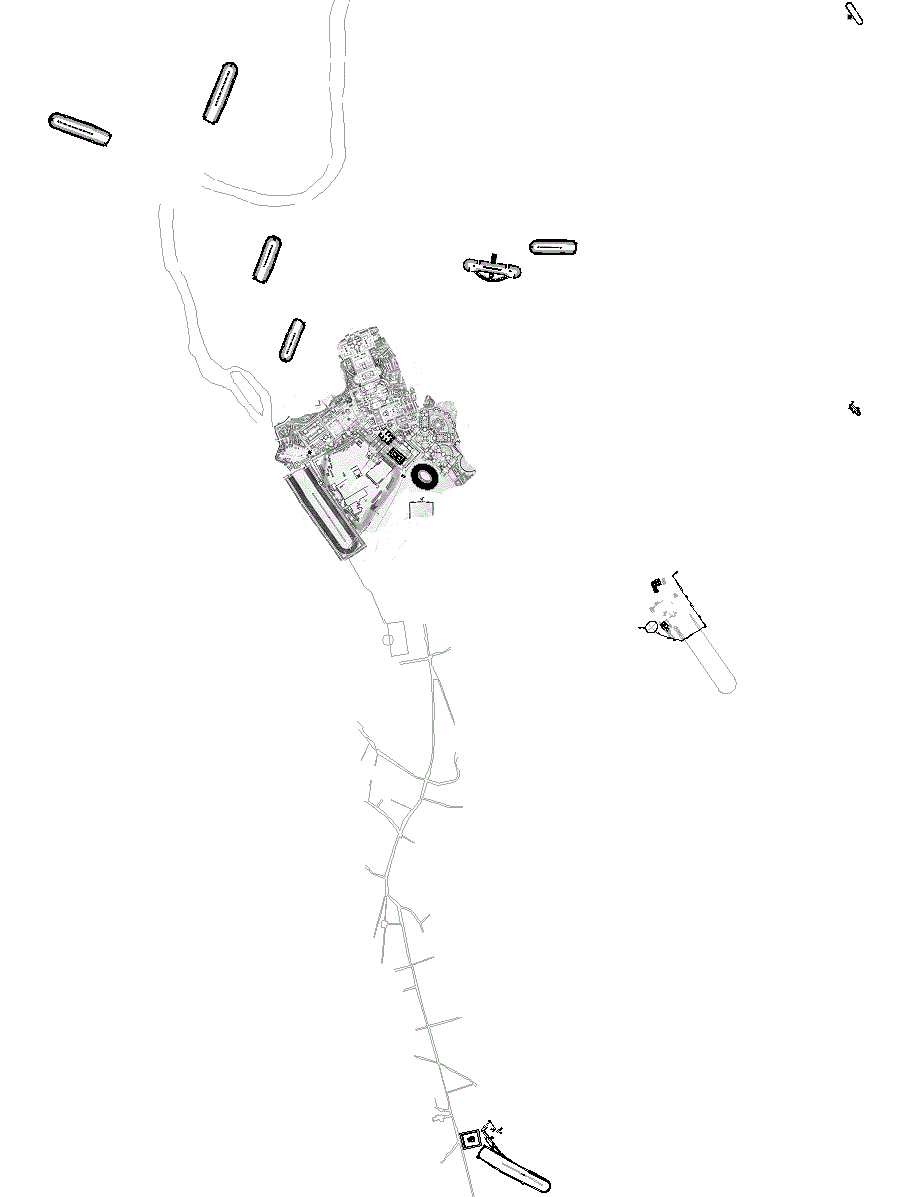
ANCIENT CIRCUSES.
Plans, details and sections of the Circuses
Nero,
Hadrian,
Domitian,
Flaminius,
Flora,
Salust,
Maximus,
Eliogabalo,
Caracalla.
The Circus of Caracalla being the best preserved, we will give the geometric and perspective details, the various restorations, the bleachers, the enclosure around which the chariot race took place, the boxes intended for the magistrates and the emperors. (The latter often took pleasure in racing themselves, driving a quadriga, four-horse chariot); the enclosure from which the chariots left. Besides the ornaments, etc., the bas-reliefs will also be mentioned, in order to make known more positively the uses and the manners adopted for the race. Curious and interesting work.
Plus,
Basilica of St. Agnes
Basilica of Sts. Peter and Marcellinus,
Basilica of St. Sebastian.
21 September 2023 Thursday
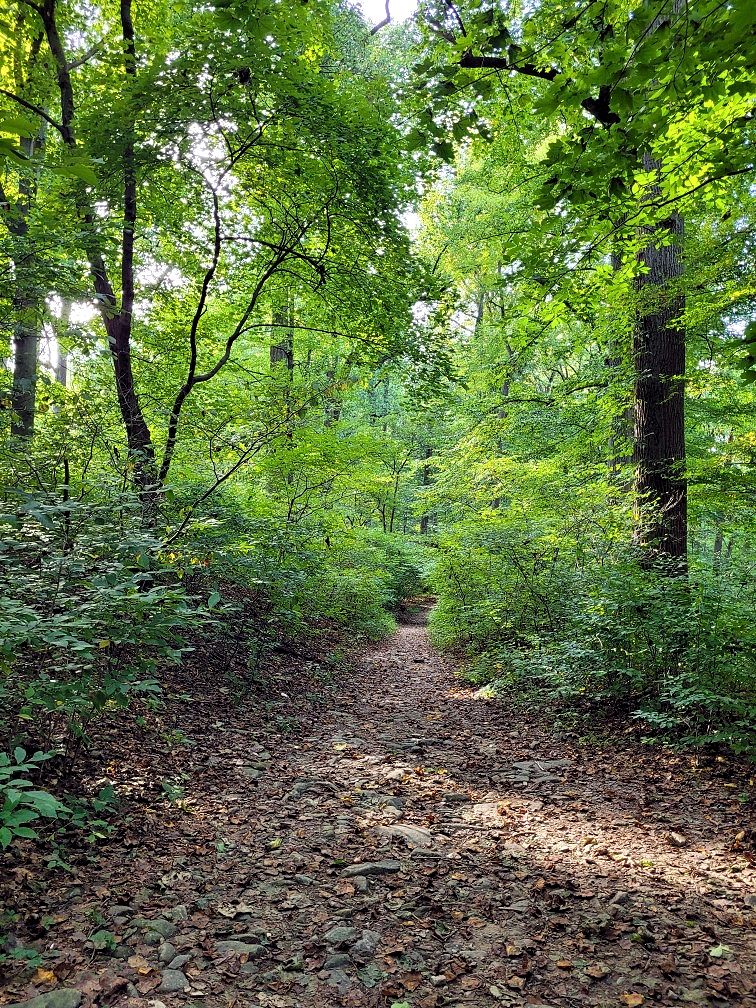
2023.09.21 16:21 My first walk in I don't know how long.
The horse trail I took part of my walk on actually has a name--Shady Lane. Virtually no one else knows that, but you'll find the trail labeled as such on old Philadelphia Ward maps of like 100 years ago. A further west portion of Shady Lane is an actively trafficked residential street, while the horse trail Shady Lane is still in its eighteenth-century condition (so to speak). I'm highly confident the young John James Audubon got to know Shady Lane quite well.
They used to say, "All roads lead to Rome."
I remember once reading that some people believe that a rocket taking off from the North Pole, and continuing in an absolute straight trajectory, will eventually reach the Earth's South Pole. The book was about hyperspace and the fourth-dimension, I think.
So take your pick, Rome or the South Pole.
Earlier today, "Shape as sign, ah ha!"
I'm literally falling asleep.
|